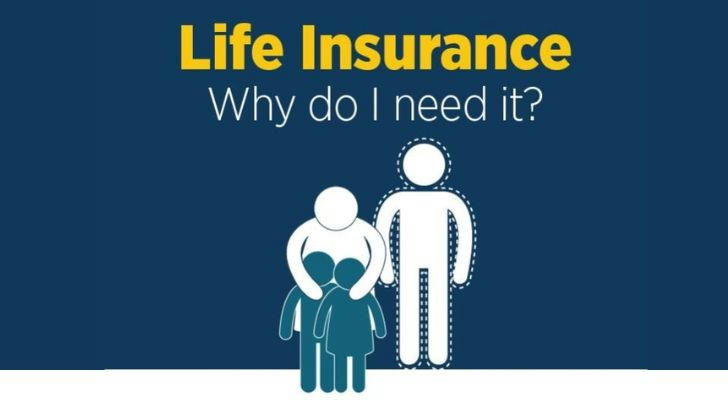Life Insurance in Plain English: Why It Could Be the Most Important Decision You Make
Life insurance might sound boring, but don’t be fooled. It’s one of the most powerful financial tools that exist — and it’s often misunderstood, ignored, or pushed to the bottom of the to-do list.This article unpacks what life insurance really is, why it matters far more than most think, and how it can turn a tragedy into a legacy rather than a financial nightmare.

What Is Life Insurance, Really?
Life insurance is a contract between a person and an insurer. The basic idea: pay a little bit every month (called a premium), and in exchange, the insurer agrees to pay out a large lump sum (called a death benefit) to the chosen beneficiaries if the insured person dies.
Think of it like a financial parachute. If someone who financially supports a household passes away, life insurance helps keep that household afloat — covering things like:
- Mortgage or rent
- School fees for kids
- Grocery bills
- Funeral costs
- Outstanding debts
- Daily living expenses
Who Actually Needs It?
Anyone who loves someone. Sounds dramatic? Maybe. But it's true. Here’s who benefits the most:
- Parents with minor children
- Couples with joint debt or a shared home
- Business owners whose death could collapse operations
- Young adults wanting to lock in low premiums early
- Caregivers supporting elderly or disabled family members
Even single people with no kids might consider a small policy — enough to cover burial expenses and avoid passing debt to others.
Why Life Insurance Is Often Ignored (And Why That’s Risky)
Some think it's too expensive. Others assume it's only for the wealthy or elderly. And some people avoid it because it feels like planning for death. Here's the reality:
- Most policies cost less than a night out — especially when bought young
- Many families fall into debt after an unexpected loss
- Delaying the decision often leads to higher costs later
Life insurance isn’t just about death. It’s about protection, peace of mind, and dignity.

The Two Main Types (And What They Mean)
There are dozens of products, but most fall under two umbrellas:
1. Term Life Insurance
This covers a person for a specific time period (e.g., 10, 20, or 30 years). If death occurs during that term, a payout is made. If the term ends while still living, nothing is paid out — like car insurance that isn’t used.
Pros:
- Very affordable
- Simple to understand
- Good for temporary needs (like raising kids or paying off a mortgage)
Cons:
- No payout if the term expires while alive
- Premiums go up if renewed at older ages
2. Whole Life (or Permanent) Insurance
This lasts a lifetime and guarantees a payout someday. It often includes a cash value component that grows over time, which can be borrowed against or withdrawn.
Pros:
- Guaranteed death benefit
- Builds cash value
- Premiums stay the same for life
Cons:
- More expensive than term
- Can be complex to manage

Real-World Example
David, a 38-year-old electrician, had a small term policy to protect his family. When he unexpectedly passed away in an accident, the policy paid out R1.2 million. His wife used it to pay off the house and set up education funds for their two children. Without that payout, she said she "would have lost everything within months."
Thabo, a single father in Johannesburg, chose a whole life policy with a cash value. When he needed funds to fix his home after storm damage, he borrowed from his policy — no bank involved, no questions asked.
These aren't fairy tales. These are real outcomes from real decisions.
Cost Breakdown: More Affordable Than Expected
Monthly premiums depend on age, health, coverage amount, and type of policy. Here's a rough guide for R1 million in coverage:
| Age Range | Term Life (Monthly) | Whole Life (Monthly) |
|---|---|---|
| 25–35 | R120–R250 | R500–R850 |
| 36–45 | R180–R400 | R850–R1,200 |
| 46–60 | R400–R1,000+ | R1,500–R3,000+ |
Health, smoking status, and pre-existing conditions will influence these rates. Many insurers require medical checks, but some offer simplified underwriting for smaller policies.
Choosing the Right Plan: 5 Key Tips
- Start early — premiums are lowest when young and healthy
- Choose based on need — don’t over-insure, but don’t undercut either
- Name clear beneficiaries — otherwise the payout may be delayed
- Ask about exclusions — suicide, risky hobbies, or war zones may be excluded
- Review every few years — especially after life events like marriage, a new baby, or buying property

Final Thoughts: Is Life Insurance Worth It?
Yes — if the idea of your loved ones struggling financially is unbearable.
Life is unpredictable. Accidents, illness, and tragedy don’t send warnings. Life insurance doesn’t stop loss, but it cushions the impact and preserves stability.
It’s one of those rare decisions that brings no regret when taken — only when ignored.
A simple policy could mean the difference between losing a loved one and losing everything.
Choose wisely. And sooner is better than later.
